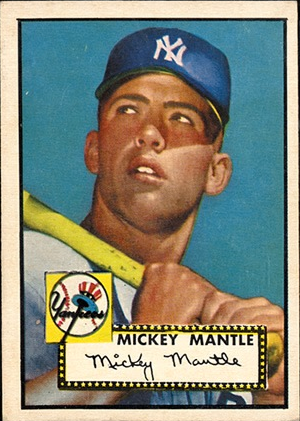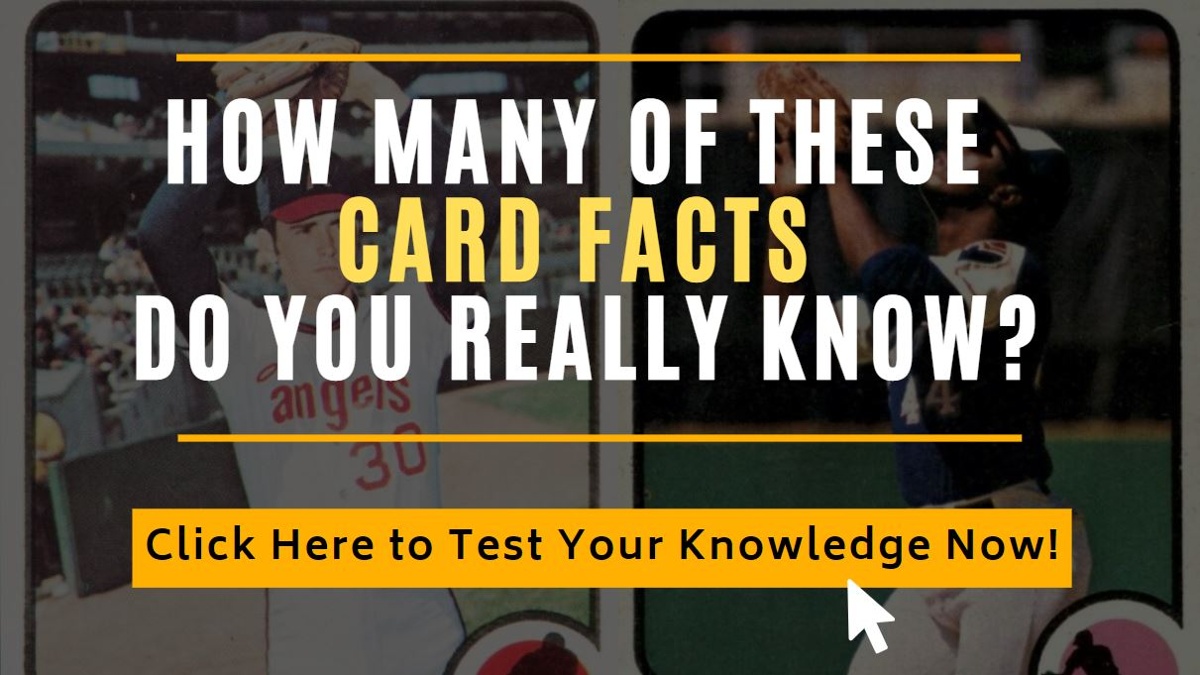From collectors to millionaires…when thinking about investing, the collectible sports card industry was never in the top 10 most lucrative markets. In fact, it might’ve not even been in the top 50…until 2020.
During their time in lockdown, many people started looking toward other avenues of entertainment. As such time for, and interest in hobbies started to rise. One of those hobbies was collecting sports cards.
With so many collectors buying, selling, and trading their cards, demand saw exponential growth and with it so did the value of some of the rarer, more iconic cards. Before anyone knew it, the collectible sports card niche had risen from a pure hobby to an all-out investing industry with cards reaching 200% to 500% their pre-pandemic price.
The Most Expensive Sports Cards To Date
- 1909 T206 Honus Wagner SGC 3 - $6.6 Million
- 1952 Topps Mickey Mantle - $5.2 Million
- 2003 Upper Deck Exquisite Collection Rookie Patch Autographs #78 Lebron James - $5.2 Million
- 2018 Panini National Treasures 1 of 1 Logoman Autograph Luka Dončić - $4.6 Million
- 2009 Bowman Chrome Draft Prospects Superfractor Autograph Mike Trout – $3.94 Million
- 1909 T206 Honus Wagner PSA 2 - $3.12 Million
- 2000 Playoff Contenders Championship Rookie Ticket Autograph #144 Tom Brady - $2.25 Million
- 2013-14 Panini National Treasures Logoman Patch Autograph Giannis Antetokounmpo - $1.86 Million
- 1996-97 Topps Chrome Refractors #138 Rookie Card Kobe Bryant - $1.79 Million
- 2003-04 Upper Deck Exquisite Collection Rookie Patch Autographs #78 LeBron James - $1.5 Million
The list can go on and on and on.
What Makes A Card Investment-Worthy?
There are three main factors that are accounted for when determining if a card is investment-worthy: Its rarity, grading, and the player(s) being depicted.
If we look at the print run for every card in the list above, they are all less than 100 (with the only exception being the 1952 Mickey Mantle). This means that there are less than 100 of each card ever created.
Fun Fact: If print run is so important, why is the 1952 Mickey Mantle card so valuable since it had a large print run?
Back in the late summer months of 1952, while kids turned their attention from baseball to football season, cases upon cases of the “Series 2, 1952 Topps” were stacked in a warehouse in New York. These cases though were taking up “valuable” storage space, so the "optimal" solution of getting rid of inventory that was going unsold was to dump them all a few miles out into the Atlantic Ocean. At that point, no one knew what an icon Mickey Mantle would become. Add this all together and out of the thousands of the iconic 1952 Mickey Mantle cards printed, the vast majority ended up in the ocean and not in the hands of collectors. So, 70 years later, what does exist is valuable!

The second factor is the condition of the card. If having a short print run makes a card rare, then how many of those cards are actually in good quality.
- Centering
- Color quality
- Edges
- Surface condition
All of these factors come into play when determining the condition of a card. Card condition is graded on a scale from 1-10 either using PSA’s or BGS’s grading system. For the purpose of this post, all card examples have been graded using the PSA grading system.
The final factor when determining value is of course the player depicted. The greater and more famous the player, the greater the demand for their card. Some other factors that also played a significant role regarding the player cards were:
- Was it their first card ever?
- Was it their rookie?
- Did the player break a record, reached a personal best, or did anything noteworthy during a particular year?
- Was the player added to the Hall of Fame?
- Does the card contain a certain piece of history?
How to Find Other “Investment-Worthy” Sports Cards
It seems that there is a new million-dollar card each week now, so one might wonder if we can learn something from those that have crossed that threshold without spending a million dollars or more?
Let’s take one from our list and focus on the 1979 OPC Wayne Gretzky Rookie PSA 9.

Overview: This is the preeminent card for one of hockey’s biggest superstars. The O-Pee-Chee (OPC) version is significantly scarcer and more condition sensitive than its Topps counterpart. This is the most iconic hockey card of the 1970s and one of the few all-time iconic cards as well. At the right price, this is a fit in almost any significant investment collection.
So, What is the “Right Price” and What Criteria Might be Used to Determine That?
First step – identify an iconic card. This clearly fits that criterion.
Next, let’s look at volumes that exist for that card by grade. There are more than 7,000 graded 1979 OPC Gretzky’s but only 2 PSA 10’s, which is the grade at which the card sold for $1.29 million. Interestingly, this milestone sale occurred in December 2020, before the frenzied spike in early 2021. Thus, this card may be worth significantly more than $1.29 million. PSA is naming their price at $2.5 million but with only 2 available, it might be years before this is seen again.

Ok, given the minimal volume of PSA 10s, the market attention naturally shifts to the PSA 9 grade. There are 90 of these in existence, which is only 1% of all the graded cards, so it’s a small number. The 1% is a “goldilocks-type” number. It’s not too scarce like the PSA 10, so there will be versions available for sale multiple times a year but it’s not too abundant that supply overwhelms demand.
How Many 1979 OPC Wayne Gretzky PSA 9 Cards Available for Sale in a Given Year?
Historically, there are approximately 7 to 9 that are available for sale in an online manner. That changed in 2021. By the end of the first half of the year, 11 had been sold as holders of this card look to cash in. The highest price recorded for this card was $265,000 at Goldin’s March auction but it has seemed to settle back into the $150,000s (a decline of almost 45% from its highest price but still about 500% higher than the price it had been selling for pre-pandemic).
What is the Demand for a 1979 OPC Wayne Gretzky PSA 9 Card?
The demand for the 1979 OPC Wayne Gretzky PSA 9 is strong as evidenced by more than 90 collectors having a registered “Wayne Gretzky Collection” on PSA.com. Considering that 90 folks registered their collections, how many hundreds have not?
Determining If The Card is a Good Investment
It really depends on timing. The challenge with properly valuing this is while a population of 90 is not all that high, it is "high" relative to its current pricing. Consider that prior to 2021, no one owned this card with more than $84,000 invested in it. That means 89 owners were/are sitting on a huge profit margin and the only “floor” to their pricing after the most recent price of $211,000, would be $84,000 (a huge drop) and those huge drops continue down into the $30,000 range. This card shot up 200% in a couple of months and then down in the next couple. 2021 has seen a rush to sell these cards and profit from this price spike.
At this price, this spike in volume may be too much for the market to absorb and still maintain its pricing. This card is worthy of a long-term investment, but given the volatility of this card, wait for a more solid floor to establish itself, which may be somewhere between $100,000 and $150,000, before a possible investment should be considered.
Keeping Alert to What’s Available
There are many places to purchase high-end sports cards but the challenge is to be aware of when they come up for sale. If a card like the Gretzky is sold 10 times a year, it’s across a variety of platforms from eBay to various auction sites. You need to be alert and following the high-end items to be cognizant of how and where the item is appearing, along with understanding how it is performing in each situation. Is it being undervalued, overvalued, is there an opportunity to buy, or to sell?
For more reading on colored diamonds, see the links below:
- The 10 most expensive watches of all time
- Top 10 Facts About Elgin Pocket Watches
- Diversify your portfolio with colored diamonds and...sports cards
- The million dollar investment opportunity
- 3 Booming niches to diversify your portfolio

